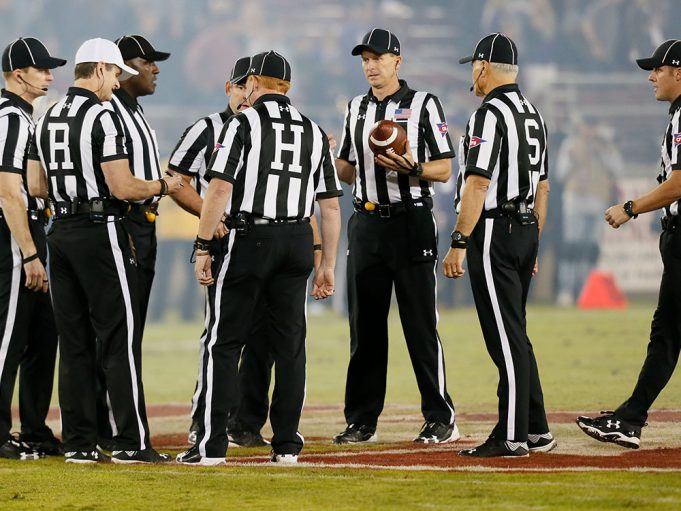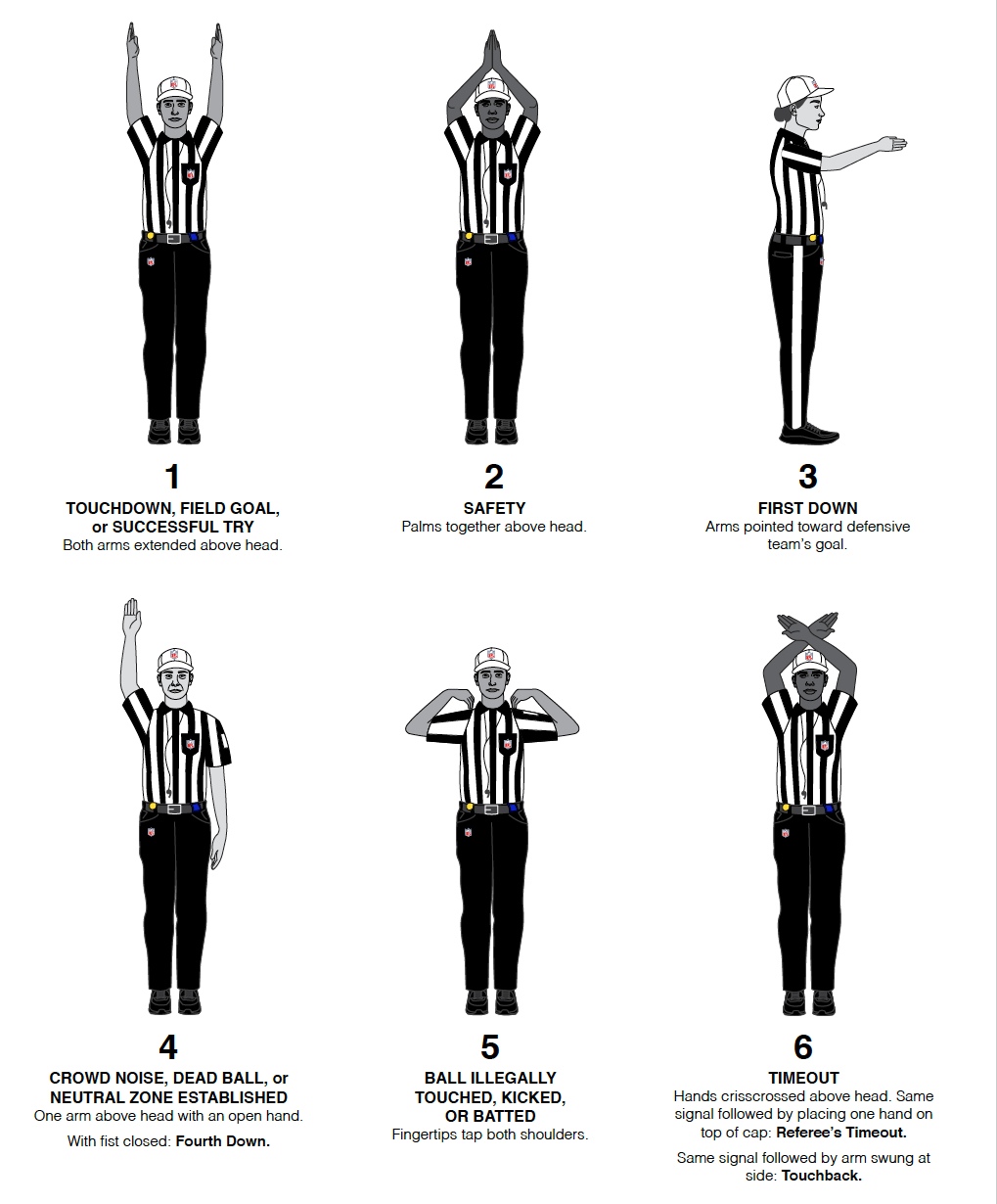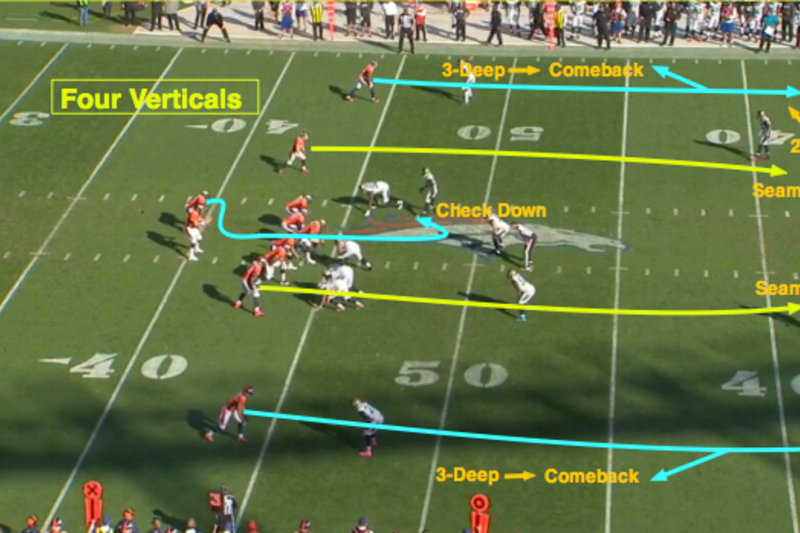An administrative timeout in football is a pause taken by officials. It is not requested by teams.
This timeout is used for various reasons, such as fixing equipment issues or handling game delays. Football is a game of strategy and quick decisions. Sometimes, unexpected situations arise that need immediate attention. An administrative timeout helps manage these moments without disrupting the game flow.
Officials use it to address problems, ensure fairness, and maintain order on the field. Understanding this timeout can help fans better follow the game. It’s a small but crucial part of football, ensuring that everything runs smoothly. Stay tuned as we dive deeper into the reasons and rules behind administrative timeouts in football.

Credit: www.referee.com
Introduction To Administrative Timeout
An administrative timeout in football can confuse many fans. It is not as common as player timeouts. But it plays a crucial role in the game.
Definition
So, what exactly is an administrative timeout? In football, it is a timeout called by the referees. It is not requested by any team. Its purpose is to manage game operations smoothly.
Purpose In Football
The primary purpose of an administrative timeout is to ensure the game runs efficiently. Referees use it to address issues on the field. It can be for resetting the play clock. Or for dealing with equipment problems.
Administrative timeouts help maintain fairness. They ensure that no team gains an unfair advantage. This timeout is all about keeping the game fair and orderly.
How Administrative Timeouts Work
Understanding how administrative timeouts work in football can enhance your viewing experience. These timeouts are often called to ensure the game runs smoothly. They are different from regular team timeouts and serve specific purposes.
Initiation Process
The initiation process for administrative timeouts begins with the referee’s discretion. Referees call these timeouts to address issues like injuries, equipment malfunctions, or broadcast requirements. They ensure the game remains fair and players’ safety is prioritized.
Duration
The duration of an administrative timeout is usually shorter than a regular timeout. It typically lasts one to two minutes. The exact time depends on the situation and the referee’s judgement. This brief pause allows necessary adjustments without significantly delaying the game.
Situations Requiring Administrative Timeouts
In football, an administrative timeout is necessary in specific situations. These timeouts ensure the game runs smoothly. This section will explore the main scenarios requiring these timeouts.
Game Interruptions
During a football game, several interruptions might occur. These interruptions often necessitate an administrative timeout:
- Player Injuries: When a player gets injured, the game must pause. This allows medical staff to attend to the injured player.
- Weather Delays: Adverse weather, like lightning or heavy rain, can halt the game. Safety of the players and fans is the priority.
- Field Conditions: Issues with the field, such as debris or equipment on the field, require a timeout for resolution.
Technical Issues
Technical problems also lead to administrative timeouts. Some common technical issues include:
- Clock Malfunctions: If the game clock stops working, the game needs a timeout. Officials must fix or replace the clock.
- Communication Problems: Coaches and players rely on headsets. If these fail, the game pauses until they are functional again.
- Equipment Failures: Broken or malfunctioning equipment, such as goalposts or cameras, requires immediate attention.
These situations demonstrate why administrative timeouts are crucial in football. They help maintain order and safety during the game.
Impact On Game Flow
Administrative timeouts in football can significantly affect the flow of a game. These interruptions can change the pace and disrupt the rhythm of play. Understanding their impact is crucial for both players and fans. Let’s explore how they influence the game’s pacing and momentum, as well as team strategies.
Pacing And Momentum
Administrative timeouts can slow down the game’s pacing. They give teams a chance to regroup and rethink their approach. This pause can be a double-edged sword. It can halt a team’s momentum and shift the game’s dynamics.
Imagine a team on a scoring drive. An unexpected timeout can disrupt their rhythm. The players may lose focus. Their opponents, on the other hand, get a chance to rest and strategize. This break can be crucial in high-stakes moments.
Fans may also feel the impact. Continuous play keeps the audience engaged. Frequent timeouts can lead to frustration. The excitement of a fast-paced game might dwindle. Keeping the game flowing is key to maintaining high energy levels.
Team Strategies
Teams often use administrative timeouts to adjust their strategies. Coaches can communicate changes in tactics. These timeouts provide a brief window to re-evaluate game plans.
Here are some common uses of administrative timeouts:
- Defense adjustments: Coaches can tweak defensive formations.
- Offense planning: Offensive teams might plan new plays.
- Resting key players: Timeouts give star players a quick rest.
- Discussing penalties: Teams can address any penalties or fouls.
Timeouts can also be a psychological tool. A well-timed timeout can break the opponent’s concentration. It can shift the momentum in favor of the team calling the timeout.
In summary, administrative timeouts play a critical role in football. They influence the game’s pacing and team strategies. Knowing their impact helps understand the game better.
Official Rules And Regulations
An administrative timeout in football is a break in the game. It is called by officials for specific reasons. These timeouts ensure the game runs smoothly and fairly. Understanding the official rules and regulations is important for players, coaches, and fans.
Governing Bodies
The rules for administrative timeouts are set by governing bodies. These organizations include the NFL, NCAA, and high school associations. Each has its own rulebook and guidelines. They ensure the game is played fairly and safely.
Rulebook Guidelines
Each governing body has a rulebook. This book outlines the reasons for administrative timeouts. Common reasons include reviewing a play, fixing equipment issues, and handling injuries. Officials follow these guidelines strictly. This keeps the game fair and organized.
Historical Examples
Administrative timeouts in football are rare but significant. They can change the course of a game. This section explores some historical examples. These examples showcase the impact of administrative timeouts.
Notable Games
One of the most notable games featuring an administrative timeout occurred in the 2012 NFL season. The New England Patriots played against the Baltimore Ravens. The officials called an administrative timeout to review a crucial play. This review changed the outcome of the game.
Another example is from the 1998 NFC Championship game. The Minnesota Vikings faced the Atlanta Falcons. A controversial administrative timeout was called. This decision allowed the Falcons to regroup and win the game.
Famous Incidents
In 2009, a memorable incident occurred during a college football game. The Texas Longhorns played the Nebraska Cornhuskers. An administrative timeout was called to review a last-minute field goal attempt. This review confirmed the field goal, securing a win for Texas.
In 2015, during a game between the Green Bay Packers and the Seattle Seahawks, an administrative timeout was used. The officials needed to review a disputed touchdown catch. This review was crucial in deciding the game’s winner.
Comparisons With Other Timeouts
Football is a game of strategy, time management, and quick decisions. Timeouts are crucial in shaping the game’s flow and dynamics. Let’s explore how an administrative timeout compares with other types of timeouts.
Team Timeouts
Team timeouts are called by the coaches or players. Each team gets a limited number of these timeouts per half. They use them to regroup, discuss strategies, and make quick adjustments. Typically, a team timeout lasts around 90 seconds. This break allows the team to change tactics or give key players a rest.
| Type | Called By | Purpose | Duration |
|---|---|---|---|
| Team Timeout | Coach/Player | Strategy & Rest | 90 seconds |
| Administrative Timeout | Officials | Game Management | Varies |
Injury Timeouts
Injury timeouts occur when a player gets hurt. These are called by the officials. They stop the clock to ensure the player receives immediate medical attention. The duration of an injury timeout can vary. It depends on the severity of the injury. Player safety is the top priority during these timeouts.
- Ensures player safety
- Medical teams assess and treat injuries
- Game resumes once the player is safe
In comparison, administrative timeouts are called by the officials. Their purpose is to manage the game clock, review plays, or handle unforeseen situations. They keep the game’s flow fair and organized.

Credit: sports.sites.yale.edu
Fan And Player Perspectives
An administrative timeout in football often brings a variety of reactions from both fans and players. These pauses, usually taken for official reasons, can affect the flow of the game. Let’s explore the common opinions and the impact on the overall experience.
Common Opinions
Fans and players often have strong feelings about administrative timeouts. Here are some of the most common opinions:
- Fans frequently feel frustrated as the game stops.
- Players may see it as a chance to catch their breath.
- Some believe it helps with game management.
- Others think it disrupts the natural flow of play.
Impact On Experience
The impact of an administrative timeout on the game experience can be significant. For fans, these breaks might feel like an interruption. They are eager to see non-stop action. This pause can lead to a drop in excitement.
For players, an administrative timeout can be a double-edged sword. On one hand, it offers them a chance to rest and strategize. On the other hand, it can break their rhythm. This pause can sometimes lead to a loss of momentum.
Both fans and players experience a shift in focus during these timeouts. The intensity of the game can dip, which might affect the overall enjoyment.
| Aspect | Fans’ View | Players’ View |
|---|---|---|
| Game Flow | Disrupted | Opportunity for rest |
| Excitement | Decreased | Mixed feelings |
| Strategy | Less engaging | Chance to plan |
Future Of Administrative Timeouts
The future of administrative timeouts in football is a topic of growing interest among fans and analysts. These timeouts, often used for broadcasting or reviewing decisions, could see significant changes in the coming years. As technology advances and the game evolves, so too will the mechanisms that govern these pauses in play.
Potential Changes
Administrative timeouts may undergo several changes. One potential change is the standardization of timeout duration. Currently, the length can vary, causing inconsistencies in game flow. Standardizing the duration could improve the viewing experience and make the game more predictable.
Another change could involve the criteria for calling timeouts. Officials might have clearer guidelines on when to use administrative timeouts, reducing controversy and ensuring fairness. This can help maintain the integrity of the game and enhance its overall appeal.
Technological Advances
Technological advances are likely to play a big role in the future of administrative timeouts. For instance, the use of real-time data analytics could help officials make quicker, more accurate decisions. This could potentially reduce the length and frequency of timeouts, making the game more fluid.
Another technological advancement could be the integration of augmented reality (AR). AR could provide instant replays and visual aids for officials, making the review process faster and more transparent. This would not only enhance the decision-making process but also improve the viewing experience for fans.
Finally, the use of automated systems for tracking player movements and game events could further streamline administrative tasks. This would reduce the need for manual intervention, allowing the game to proceed with fewer interruptions.

Credit: operations.nfl.com
Frequently Asked Questions
What Is An Administrative Timeout In Football?
An administrative timeout in football is a break in play called by officials. It’s used for administrative purposes, such as reviewing a play or correcting the game clock.
When Is An Administrative Timeout Used?
An administrative timeout is used when officials need to handle administrative tasks. This can include reviewing a play, correcting the game clock, or ensuring player safety.
How Long Does An Administrative Timeout Last?
The duration of an administrative timeout can vary. Typically, it lasts a few minutes, depending on the situation and the issue being addressed.
Who Can Call An Administrative Timeout?
Only the game officials can call an administrative timeout. Coaches and players cannot request this type of timeout.
Conclusion
Administrative timeouts are crucial in football. They ensure smooth game operation. Coaches and players get brief rests. These timeouts help officials manage the game. Understanding their role enhances your football knowledge. Next time you watch, notice these breaks. They might seem short, but they matter.
Your appreciation for the game will grow. Keep enjoying football with this new insight.





